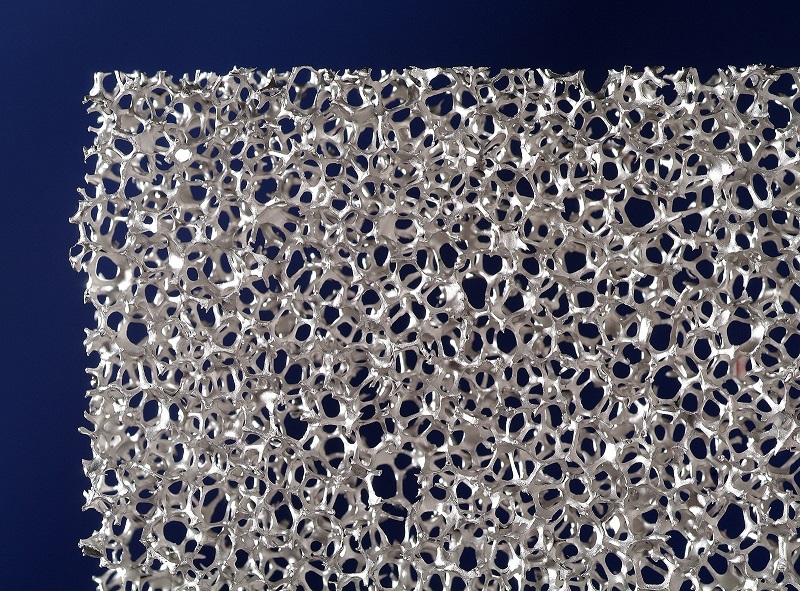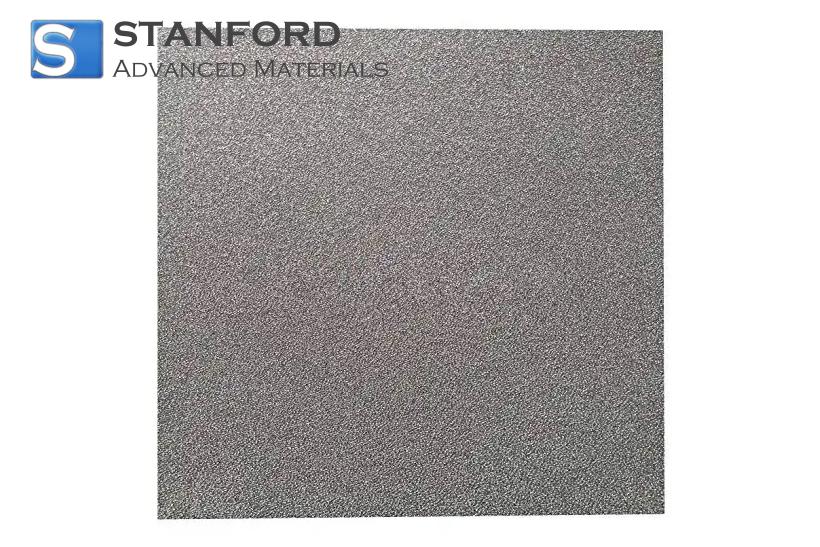Application Of Titanium Foam
Everyone is familiar with metal, but have you ever heard of metal foam? Metal foam is a new type of metallic material that incorporates foam pores. It maintains the characteristics of metals such as weldability, conductivity and thermal expansion, while providing attributes of porous materials: energy absorption, vibration damping, noise reduction, electromagnetic shielding, air and water permeability and low thermal conductivity. Among the metal foams currently produced are primarily Aluminium-, Magnesium, Copper-, Nickel-, Steel- and Titanium Foams. This article presents a detailed examination of the application of titanium foam.

Application of Titanium Foam
Application of Titanium Foam
1. Application of Titanium Foam in Biomedical Materials
Titanium foam demonstrates biocompatibility, appropriate mechanical characteristics and corrosion resistance inherent to titanium and its alloys. Its interconnected porous structure enables the transport of water and nutrients. Consequently, this structure supports the adhesion, differentiation and proliferation of bone cells, thereby reinforcing the connection between the implant and bone and facilitating biological fixation.
Consequently, porous titanium alloy may be applied as an implant material in the restoration of bones, joints, blood vessels and dentition.
2. Application of Titanium Foam in Impact-Resistant Materials
Under impact, the pores in titanium foam absorb energy and can sustain a greater load. Given that this material withstands high impact, it may be utilised in automotive crash structures, spacecraft chassis, elevator safety buffers, various packaging applications and as a protective material for rocket and turbine engines.
3. Application of Titanium Foam in Battery Materials
The utilisation of porous titanium foam that offers high porosity and a large specific surface area as the gas diffusion layer in fuel cells can significantly enhance the energy released during the electrochemical reaction.
4. Application of Titanium Foam in High-Temperature Dust Filter Materials
Due to the permeability provided by its hollow structure, titanium foam combines high-temperature heat resistance, oxidation resistance and permeability. It may be used for dust filtration under elevated temperature conditions.
Recent investigations into foamed titanium materials have produced quantifiable results. However, the technology remains in an experimental stage and is not yet industrially established. Further in-depth research is required to achieve broader application of titanium foam.
Conclusion
Thank you for reading this article. We trust that it has provided a clearer understanding of the application of titanium foam. If you require further information regarding titanium and titanium foam, please visit Stanford Advanced Materials (SAM) for additional details.
Stanford Advanced Materials (SAM) is a global supplier of titanium foam. It has more than 20 years’ experience in the manufacture and distribution of titanium and titanium foam and provides titanium products that meet the research and production requirements of its clients. SAM is regarded as a dependable supplier and business partner for titanium products.

 Bars
Bars
 Beads & Spheres
Beads & Spheres
 Bolts & Nuts
Bolts & Nuts
 Crucibles
Crucibles
 Discs
Discs
 Fibers & Fabrics
Fibers & Fabrics
 Films
Films
 Flake
Flake
 Foams
Foams
 Foil
Foil
 Granules
Granules
 Honeycombs
Honeycombs
 Ink
Ink
 Laminate
Laminate
 Lumps
Lumps
 Meshes
Meshes
 Metallised Film
Metallised Film
 Plate
Plate
 Powders
Powders
 Rod
Rod
 Sheets
Sheets
 Single Crystals
Single Crystals
 Sputtering Target
Sputtering Target
 Tubes
Tubes
 Washer
Washer
 Wires
Wires
 Converters & Calculators
Converters & Calculators
 Write for Us
Write for Us

 Chin Trento
Chin Trento



